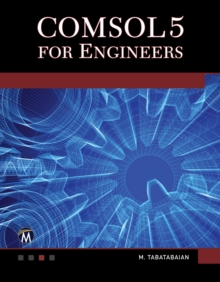
Computational Modeling of Shallow Geothermal Systems Hardback
by Rafid Al-Khoury
Part of the Multiphysics Modeling series
Hardback
- Information
Description
A Step-by-step Guide to Developing Innovative Computational Tools for Shallow Geothermal SystemsGeothermal heat is a viable source of energy and its environmental impact in terms of CO2 emissions is significantly lower than conventional fossil fuels.
Shallow geothermal systems are increasingly utilized for heating and cooling of buildings and greenhouses.
However, their utilization is inconsistent with the enormous amount of energy available underneath the surface of the earth.
Projects of this nature are not getting the public support they deserve because of the uncertainties associated with them, and this can primarily be attributed to the lack of appropriate computational tools necessary to carry out effective designs and analyses.
For this energy field to have a better competitive position in the renewable energy market, it is vital that engineers acquire computational tools, which are accurate, versatile and efficient.
This book aims at attaining such tools. This book addresses computational modeling of shallow geothermal systems in considerable detail, and provides researchers and developers in computational mechanics, geosciences, geology and geothermal engineering with the means to develop computational tools capable of modeling the complicated nature of heat flow in shallow geothermal systems in rather straightforward methodologies.
Coupled conduction-convection models for heat flow in borehole heat exchangers and the surrounding soil mass are formulated and solved using analytical, semi-analytical and numerical methods.
Background theories, enhanced by numerical examples, necessary for formulating the models and conducting the solutions are thoroughly addressed. The book emphasizes two main aspects: mathematical modeling and computational procedures.
In geothermics, both aspects are considerably challenging because of the involved geometry and physical processes.
However, they are highly stimulating and inspiring. A good combination of mathematical modeling and computational procedures can greatly reduce the computational efforts.
This book thoroughly treats this issue and introduces step-by-step methodologies for developing innovative computational models, which are both rigorous and computationally efficient.
Information
-
Out of StockMore expected soonContact us for further information
- Format:Hardback
- Pages:254 pages
- Publisher:Taylor & Francis Ltd
- Publication Date:30/09/2011
- Category:
- ISBN:9780415596275
Other Formats
- PDF from £70.19
- Paperback / softback from £64.71
£190.00
£151.06
Information
-
Out of StockMore expected soonContact us for further information
- Format:Hardback
- Pages:254 pages
- Publisher:Taylor & Francis Ltd
- Publication Date:30/09/2011
- Category:
- ISBN:9780415596275



